The Temple Run series is known as some of the best games ever made.
The first Temple Run game, released back in 2011 by Imangi, was a huge hit among mobile gamers. So far, it has been downloaded more than 1 billion times! The sequel, Temple Run 2 was equally as successful. It got to 20 million downloads in just 4 days of its release and surpassed 700 million all-time downloads. (AppMagic)
But can Temple Run still compete? Is it still relevant? What made it so popular among players in the first place?
I answer all of these questions and more in our Temple Run 2 analysis.
Oldie but a Goodie
If we examine Temple Run 2’s download history, there were many ups and downs, but the game never went under 2 million monthly downloads.
Currently, it is experiencing a big revival.
In May 2023, it surpassed 12 million downloads, which is close to the game’s two all-time peaks of 13 million downloads in December 2015 and September 2018. (AppMagic)
That tells us Temple Run 2 is not only still popular but is close to breaking new records ten years in. That’s quite an achievement considering older games tend to fizzle out over time, no matter how successful they once were.
It’s safe to say that 2023 has so far been a great year for Imangi.
Along with the continued success of Temple Run, the studio is also making waves with a new game, Temple Run: Idle Explorers, a departure from classic Temple Run games. Learn more about it in my Idle Explorers analysis.
But back to Temple Run 2. Let’s examine the addictive game mechanics that made this game a hit.

Basic Game Mechanics in Temple Run 2
Temple Run 2 is one of the staples of the arcade genre and endless runner subgenre.
It’s a casual game at its core. The controls are intuitive and an average run doesn’t last more than a minute. That means it can be played casually during short breaks.
It’s also a quick-paced game that’s incredibly exciting to play, which is what makes it so addictive.
In Temple Run 2, players run forward through an infinite path they need to navigate while being chased by an ape-looking creature. The goal is to achieve the most distance and collect as many coins as possible.

The game features simple touchscreen controls:
- Swiping (jump, slide down, and turn)
- Tilting (move left and right)
- Tapping (activates a power-up or perk)
The tilting mechanic is the most interesting out of the three because it makes the runs interactive and much more exciting.
But it’s not all about just running and avoiding obstacles. There are additional features that make Temple Run 2 more engaging and complex, which is necessary for a well-rounded game.
Progression Systems and Features in Temple Run 2
While the controls are simple and the game is easy to play, it’s difficult to master, which is what all games should strive for.
After reaching certain distances, the running becomes a bit faster and more challenging, which makes the game progressively more difficult.
To collect more coins and run farther, players need to utilize various power-ups and perks, as well as complete objectives and challenges, which adds to the complexity.
Here’s an overview of the game’s progression systems and features that extend its playability and eliminate the risk of running out of fun content.

Power-ups
Players can equip power-ups that help them achieve better results from runs. For example, a coin bonus, coin magnet, and shield. They can be used each time the power meter fills up.
However, not all power-ups are available right away. Players need to reach a certain level to unlock each new one. This is one of the features that motivates players to keep playing and reach higher levels.

Perks
Perks also enhance gameplay. They’re similar to power-ups.
Some examples of perks in Temple Run 2 are phoenix wings that protect players from death and a mirage that creates a character clone. There’s one slot in the beginning, with more available later on in the game.

Players can get free perks by watching an ad or purchasing them with real money. However, one can’t watch an unlimited number of ads – there’s a limit of 5 rewarded ads for every couple of hours.
Also, players can’t choose which perk they’ll get when getting it for free.
Essentially, it’s a tactic that gives players a taste of the perks and gets them used to using them during runs. Once players run out of free perks, they may be tempted to buy more with real money.

Unlockable Characters
Temple Run wouldn’t be as memorable without its iconic characters like Guy Dangerous and Scarlett Fox.
There are tons of other unique characters to play with. To unlock them, players need coins, gems, or character tokens, depending on the characters.
Along with collecting characters, players can also customize them and purchase various cosmetic items like outfits, hats, and pets.
All that gives players something to work towards and gives more purpose to runs. Long-term goals such as these are essential for maximizing retention rates of casual games.
Mobile gamers also love personalization, as that helps them identify more with the characters.

Objectives
There are various objectives players work towards at each level.
These objectives include tasks such as collecting a certain number of coins, reaching specific distances, or performing specific actions during gameplay. For example, running 50k meters with Scarlett Fox or finding an artifact.
By completing these objectives, players can earn additional rewards and progress further in the game.
The main purpose of this feature is to enrich gameplay and boost player engagement.

Challenges
Along with objectives, players also need to complete challenges in Temple Run 2. As a reward, players get coins or the game’s premium currency – gems. There are daily, weekly, and global challenges.
For daily challenges, there’s a daily streak that motivates players to run every day, complete all challenges, and earn a big reward at the end of the week.
Just like objectives, challenges are here to make gameplay more engaging and motivate players to come back to the game.

Upgrades
Another important Temple Run 2 feature is the upgrades players can purchase with coins they earn from runs. For example, increasing shield duration by 75% or increasing boost distance by 150 meters.
This is the main thing players spend earned coins on, which makes it a crucial part of the game’s economy and has a role in the game’s monetization strategy. But more on that later.

Collectibles
Along with collecting game characters, players can also collect items like totems.
Collecting totems unlocks unique buffs. Buffs only last for a limited time so players need to make as many runs as possible.
And as I mentioned before, totems unlock certain new characters, which gives them additional value.

Maps
Running on the same map over and over again can get a bit boring. That’s why Imangi added several maps players can choose from like Blazing Sands, Lost Jungle, and Pirate Cove.
What makes maps even more interesting is the ability to complete maps by discovering and collecting various artifacts like charms, totems, flora, fauna, and armor. There’s a progress bar for each one, emphasizing this Temple Run progression system.
But not all maps are available right away and for free.
Some maps require gems to unlock, the premium currency that’s not so readily available. It makes sense because maps are the perfect monetization opportunity – players who want to unlock a map might be tempted to purchase gems with real money.
This brings us to another important aspect of this game – how it earns money.

Temple Run 2: Monetization
No matter how good of a player you are, eventually, everybody makes a wrong move and gets defeated in a run.
When players make a mistake, they have two options – end the run and start over or continue the run. If they want to continue, they can either watch a rewarded ad or spend diamonds. However, there’s a limit as to how many ads players can watch during one run.
When players are out of ads to watch, they need to spend diamonds to continue. But diamonds are a scarce premium currency, which means players need to buy more of it with real money.
This is an example of the game’s hybrid monetization strategy, which means it combines more than one monetization model. In this case, in-app purchases and ads. That way, developers can monetize non-paying users with ads and maximize the game’s earning potential.
In-App Ads in Temple Run 2
Besides rewarded video ads, which players tend to like because they get free rewards and perks, like continuing a run, there are also non-opt-in interstitial ads.
They appear after each run ends.
That means players who are very good at the game and can run for a long time without making a mistake will see these ads less often. On the other hand, someone like me, whose runs are often cut short after just 10 seconds, will see tons of ads.
Luckily, there’s the option to remove these interstitial ads (but keep rewarded video ads). But it costs real money.

In-app Purchases
Engaged players who go on many consecutive runs may be tempted to spend a couple of bucks to permanently remove ads from the game. The offer is cheap enough to make it accessible to all players.
However, there’s a free way to remove ads from Temple Run 2 – offerwalls. Players can choose to complete certain non-game-related tasks and be rewarded with an ad-free experience.
Most other IAP offers are based on the game’s currencies – coins and gems. They range from cheap to more expensive offers. For example, players can choose from a handful of coins, a bag of coins, a chest of coins, and a vault of coins. The same goes for gems.
Besides currency, players can also purchase certain power-ups and perks. But where players get the most bang for their buck are bundles, which feature exclusive items.
An Effective Monetization Strategy?
Interestingly, Temple Run started as a paid game, selling at $0.99. But after just one month, Imangi realized the future was in free-to-play games. Transitioning to a freemium model instantly drove up the app’s revenue.
Temple Run’s current monetization strategy is simple but effective. It’s based on progression systems and players’ need to sustain rapid progress, upgrade skills, and collect premium characters.
Competition is another component – beating other players’ high scores is oftentimes worth spending money on.
One thing that could be improved is cosmetic monetization. It has a lot of potential but seems a bit underutilized currently.

How Does Temple Run 2 Compare to Subway Surfers?
To finish off this Temple Run analysis, let’s compare this game to its biggest competitor – Subway Surfers.
Temple Run 2 vs. Subway Surfers
Endless runner games tend to be very similar. The same is true for two leading games in the genre, Temple Run 2 and Subway Surfers.
However, there are some notable differences.
Gameplay Difficulty
Primarily, Temple Run can be a bit more challenging and complex compared to Subway Surfers. That’s because Temple Run has twists and turns, i.e. players need to be quick to turn left or right, on top of tilting their phones to slide to the left and right side.
That requires a lot of concentration and fast reflexes.
Subway Surfers, on the other hand, features a straight path – the only thing players need to do is move left and right, along three paths. Even though Subway Surfers’ gameplay is overall a bit faster than Temple Run’s, the simpler game mechanics make it overall easier to play.
Graphics
An obvious difference between Temple Run 2 and Subway Surfers is in the graphics. The former features a realistic art style when it comes to maps and characters, while the former is cartoonish and stylized.
Sustained Interest
Both games have features and strategies in place to ensure players don’t get bored and are sufficiently challenged.
But I would say that Temple Run is slightly more successful at progressive difficulty, making it more challenging for players the more they play.
However, we need to keep in mind that not all players want to be challenged all the time and be met with increasing difficulty. This is why Subway Surfers might be more suitable for a true casual audience that just wants to enjoy the game without needing to constantly improve their skills.
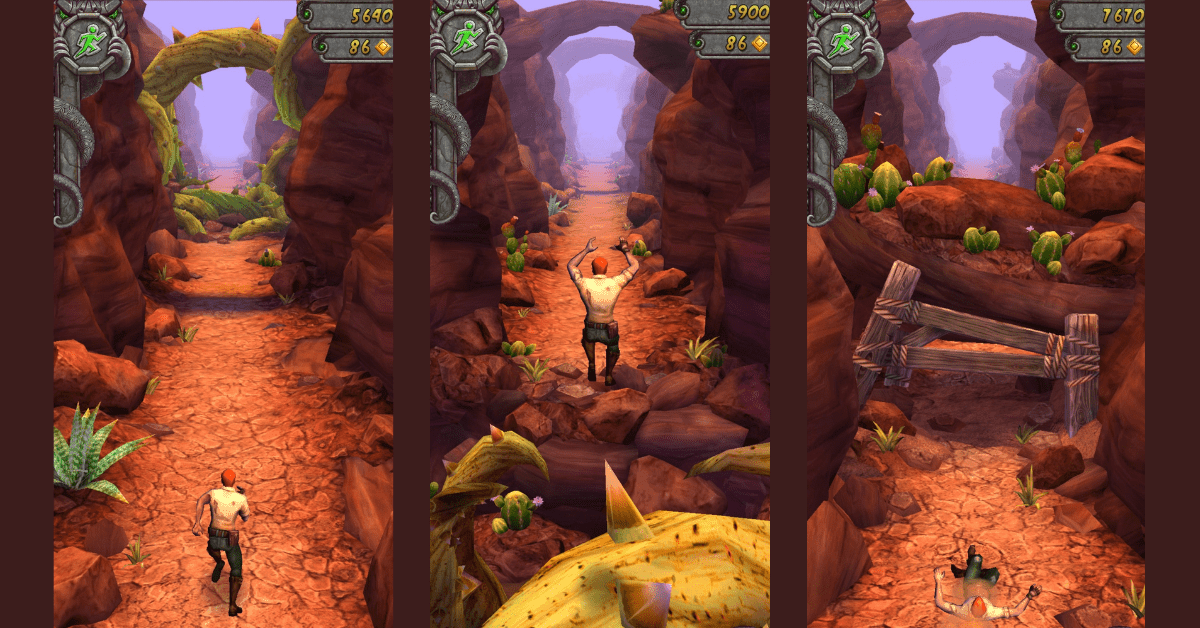


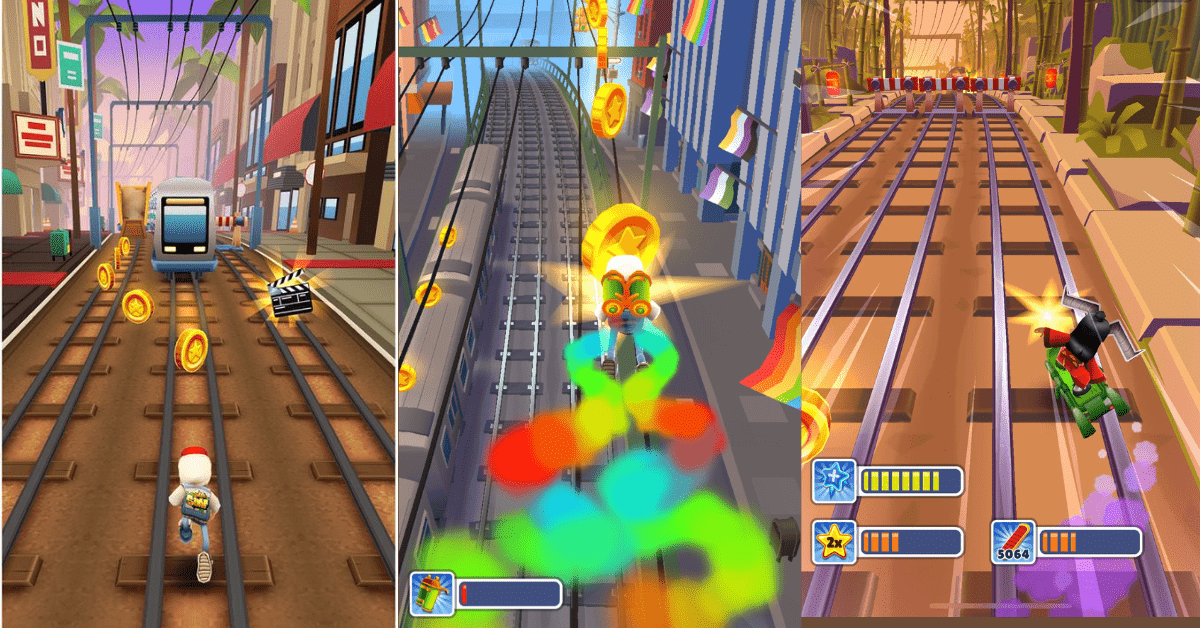
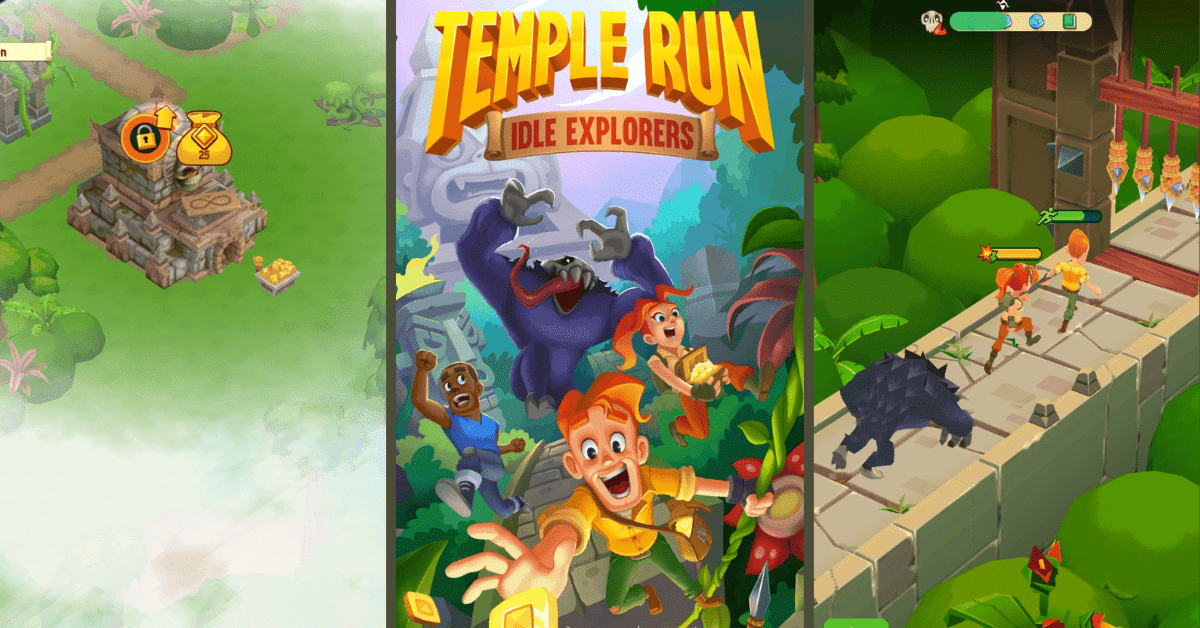
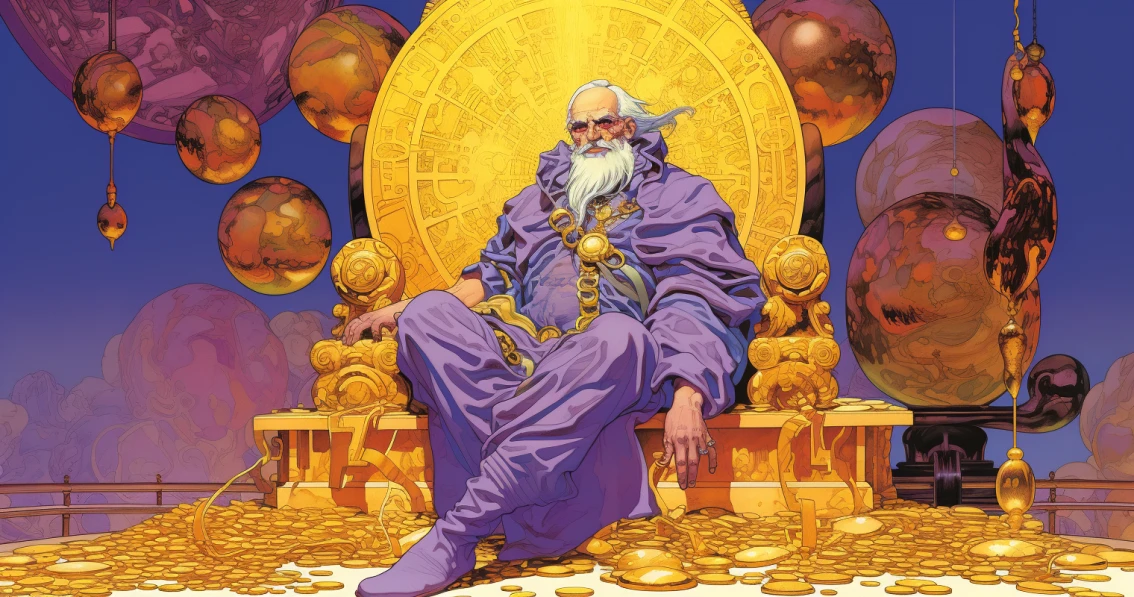
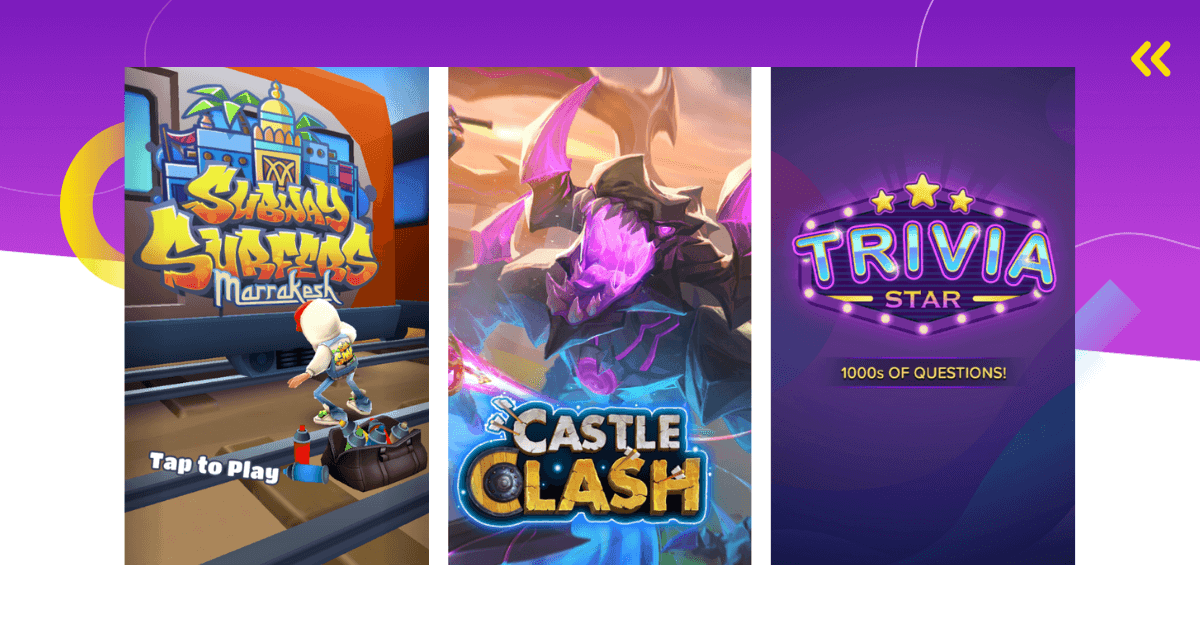
Comments